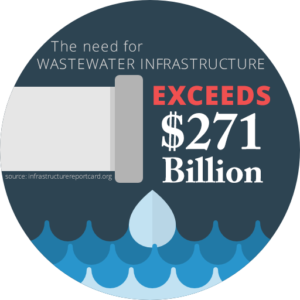Why PipeBuddy™?

There are millions of pipe segments, manholes and other structures in the sanitary and storm sewer systems across the USA and around the world. More than 40 percent of these structures (in the USA) have been in service for more than 50 years – regarded as a typical service life. As such, many of these pipes, manholes and other structures are in need for rehabilitation or replacement, but the main question is which one and what type of rehabilitation will reset the service life? Per the AWWA and an EPA sponsored Water Environment Research Foundation (WERF) project, rehabilitation methods can be classified as non-structural (corrosion barrier), semi-structural (partially relying on the host) or fully-structural (stand-alone).
The decision on which rehabilitation method would be most suitable for each case is an important one, because a fully-structural system typically costs about five times more than non-structural and 2-3 times more than semi-structural. The cost difference between making an analytical or poor choice for a utility can be millions of dollars in a rehabilitation program in addition to increased risk of failure. It is also important to note that despite being in service for a long time and abrasive environments in sewers, the majority of the pipes do not require an expensive, stand-alone rehabilitation system.
The main question is how do we know when it is okay to rehabilitate with a semi-structural or non-structural rehabilitation system or leave it as is? PipeBuddy™ provides the answer to that question for each pipe. It is a user-friendly, cloud based application that tells the user what to do with a pipe upon inspecting it based on the pipe and site conditions. In other words, it does the condition assessment and data storage for you in a fast and very economical way!

PipeBuddy™ is the most comprehensive and robust Decision Support Tool available for the Repair & Renewal phase in the Infrastructure Life Cycle.
PipeBuddy™ was developed on a decision support system, which is a product of a team of civil and software engineers with a combined experience of more than 50 years in the underground infrastructure industry and backed by a research project that was sponsored by the federal government.
PipeBuddy™ for Utilities
Water and wastewater utilities around the globe can use PipeBuddy to make informed and rapid decisions on whether to replace, rehab, or leave a pipe as it is. PipeBuddy delineates the level of rehabilitation as fully structural (equivalent to replacing a pipe), semi-structural (partially relying on the existing pipe) or non-structural (to provide a corrosion barrier for a pipe that is structurally sound). PipeBuddy™ is the culmination of decades of engineering expertise and cutting-edge algorithms, harnessing over 100 parameters and equations for smart decision-making. Elevate your underground infrastructure management with the industry’s most advanced, yet user-friendly decision support tool.
